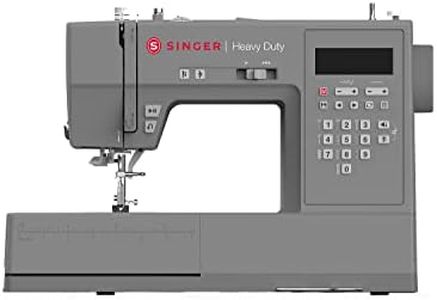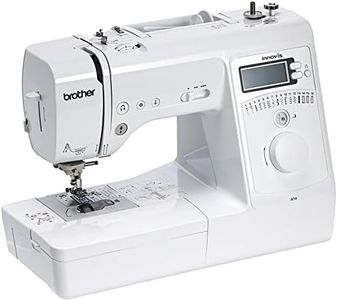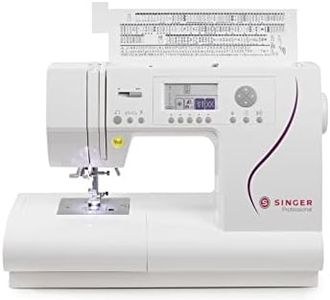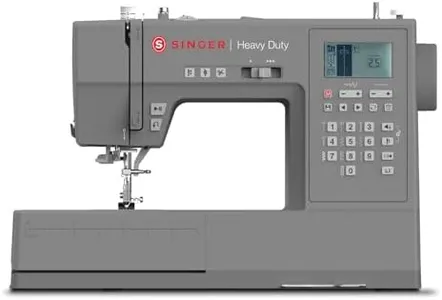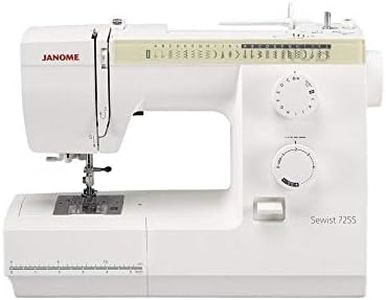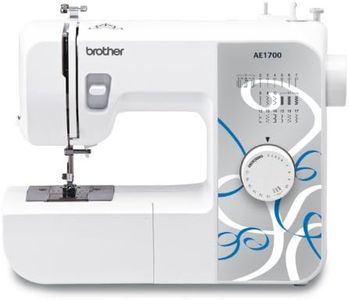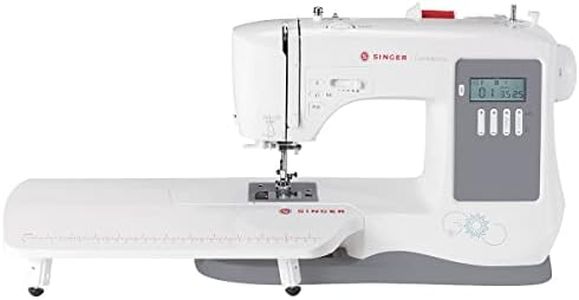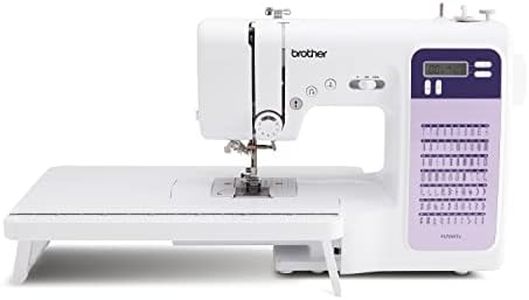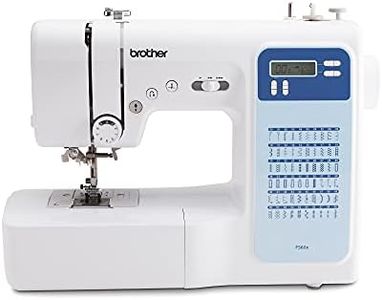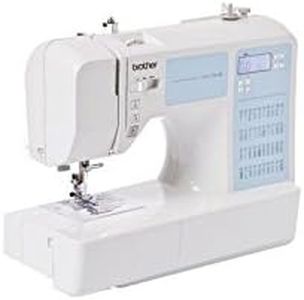We Use CookiesWe use cookies to enhance the security, performance,
functionality and for analytical and promotional activities. By continuing to browse this site you
are agreeing to our privacy policy
10 Best Computerized Sewing Machines
From leading brands and best sellers available on the web.Buying Guide for the Best Computerized Sewing Machines
Choosing the right computerized sewing machine can truly enhance your sewing experience, whether you're a beginner or an experienced crafter. These machines offer features that make sewing projects faster, more accurate, and more enjoyable. When making a selection, it's important to focus on your own needs and the types of projects you'll be taking on. Consider how comfortable you feel with technology, the range of stitches you might need, and whether you'll be handling heavy fabrics or delicate textiles. Learning about the most important specifications will help you confidently pick a machine that meets your needs and lets your creativity shine.Stitch SelectionStitch selection refers to the number and variety of stitch patterns the sewing machine can make, including straight, zigzag, decorative, and buttonhole stitches, among others. This is important because it determines the flexibility and creative potential you have with your machine. Machines with a basic selection (usually under 30 stitches) are suitable for simple projects and repairs. Mid-range machines offer 30–100 stitches, covering more decorative options and a few specialty stitches, making them great for garment sewing and home décor. High-end models can have hundreds of stitches and often include alphabet and embroidery stitches, ideal for advanced users or those looking to experiment with creative embellishments. Consider what types of sewing you plan to do most and pick a machine with stitches that align with those needs, rather than just the highest number.
Automatic FeaturesAutomatic features include things like automatic needle threading, automatic thread cutting, and automatic tension adjustment. These functions can make your sewing experience much smoother and help prevent frustration. Beginners may appreciate a machine that handles more steps automatically, reducing setup time and the chance of mistakes. If you're experienced and enjoy precision, you might prefer machines where you can tweak settings manually, but with helpful automated assists. Think about whether you value convenience and time-saving, or if you want more manual control when choosing which automatic features matter most to you.
Speed ControlSpeed control lets you adjust how fast or slow the machine sews, usually with a slider or button on computerized models. This is important because it helps you maintain control, especially when sewing intricate patterns or when you're still gaining confidence. Machines with limited speed control may have only basic settings (slow, medium, fast), while others let you fine-tune the speed for detailed work. If you're a beginner or often work with detailed stitching, a machine with precise speed control will be more helpful. More advanced users who are comfortable with faster sewing may prioritize higher top speeds for efficiency.
Display TypeThe display type refers to the screen used to show settings and help navigate the machine. Options include simple LED screens, full digital LCD panels, and even touchscreens. This is important because a clear, easy-to-understand display makes it much easier to select stitches, adjust settings, and understand error messages. If you’re not comfortable with high-tech interfaces, a straightforward LED or basic LCD may be best. If you love gadgets and like exploring options, a large touchscreen could enhance your experience. Match the display complexity to your comfort with technology.
Needle PositionsNeedle positions refer to the ability to move the sewing needle left or right to different spots across the presser foot. This spec matters because it gives you more flexibility for detailed work, such as topstitching or zipper insertion. Basic machines might have only one or two needle positions (center and left), while more advanced ones offer many positions. If you mostly do simple straight stitches or repairs, fewer positions may be enough. If you expect to do detailed garment construction or quilting, having multiple needle positions will be a valuable tool.
Buttonhole StylesButtonhole styles indicate the number and variety of automatic buttonholes the machine can create. This is crucial for garment making, as easy, even buttonholes make your clothes look professionally finished. Entry-level machines might offer just a single basic buttonhole, while others provide multiple sizes and styles (such as keyhole, round-end, or stretch buttonholes). If you’ll be sewing a lot of garments or different fabric types, having a variety of buttonhole options ensures the right fit and finish for every project. For occasional use, one or two basic types should suffice.
Feed SystemThe feed system describes how the machine moves fabric under the needle. Good feed systems keep fabrics moving evenly and prevent shifts, which is especially important for quilting or sewing multiple layers. Basic feed systems work fine for standard sewing, while more advanced machines might include things like a walking foot or adjustable feed dogs for handling difficult fabrics like knits, silks, or heavy layers. If you plan on sewing tricky materials or quilting, a machine with an advanced feed system will be more helpful.
Free ArmA free arm is a removable portion of the sewing bed that makes it easier to sew small, circular pieces like sleeves, cuffs, and pant hems. This is particularly handy if you do garment construction or alterations. Most computerized machines offer this feature, but it’s worth checking. If you mainly sew flat items like quilts, the free arm may not be used as often, but for clothing makers or repairers, it’s almost essential.
Extension TableAn extension table is a removable surface that makes the sewing area larger, supporting big projects like quilts or curtains. This makes the machine much easier to use with bulky or wide fabrics. If you sew large projects, prioritize finding a model with this accessory, but if you stick with smaller items, it may not be necessary.
